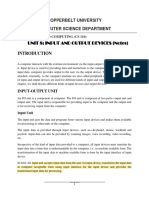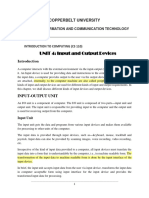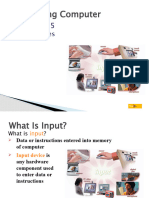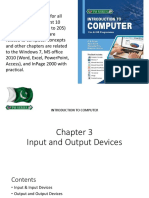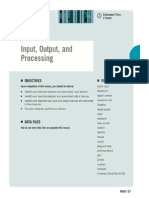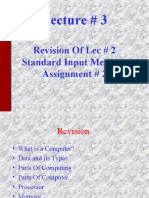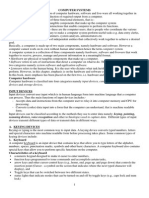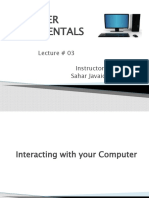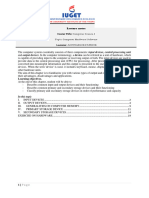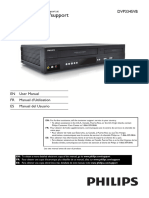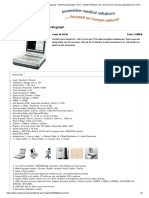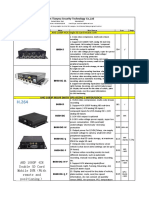0% found this document useful (0 votes)
6 views8 pagesInput Devices
The document provides an overview of input devices, detailing various types such as keyboards, pointing devices, audio input devices, and visual imaging devices. It explains the classification of input devices into manual, automated, audio, and visual categories, along with their functionalities and examples. Additionally, it covers specific input methods like voice recognition and data input techniques for handheld devices, as well as the uses of digital cameras and video input methods.
Uploaded by
Israa AliCopyright
© © All Rights Reserved
We take content rights seriously. If you suspect this is your content, claim it here.
Available Formats
Download as DOCX, PDF, TXT or read online on Scribd
0% found this document useful (0 votes)
6 views8 pagesInput Devices
The document provides an overview of input devices, detailing various types such as keyboards, pointing devices, audio input devices, and visual imaging devices. It explains the classification of input devices into manual, automated, audio, and visual categories, along with their functionalities and examples. Additionally, it covers specific input methods like voice recognition and data input techniques for handheld devices, as well as the uses of digital cameras and video input methods.
Uploaded by
Israa AliCopyright
© © All Rights Reserved
We take content rights seriously. If you suspect this is your content, claim it here.
Available Formats
Download as DOCX, PDF, TXT or read online on Scribd
/ 8




